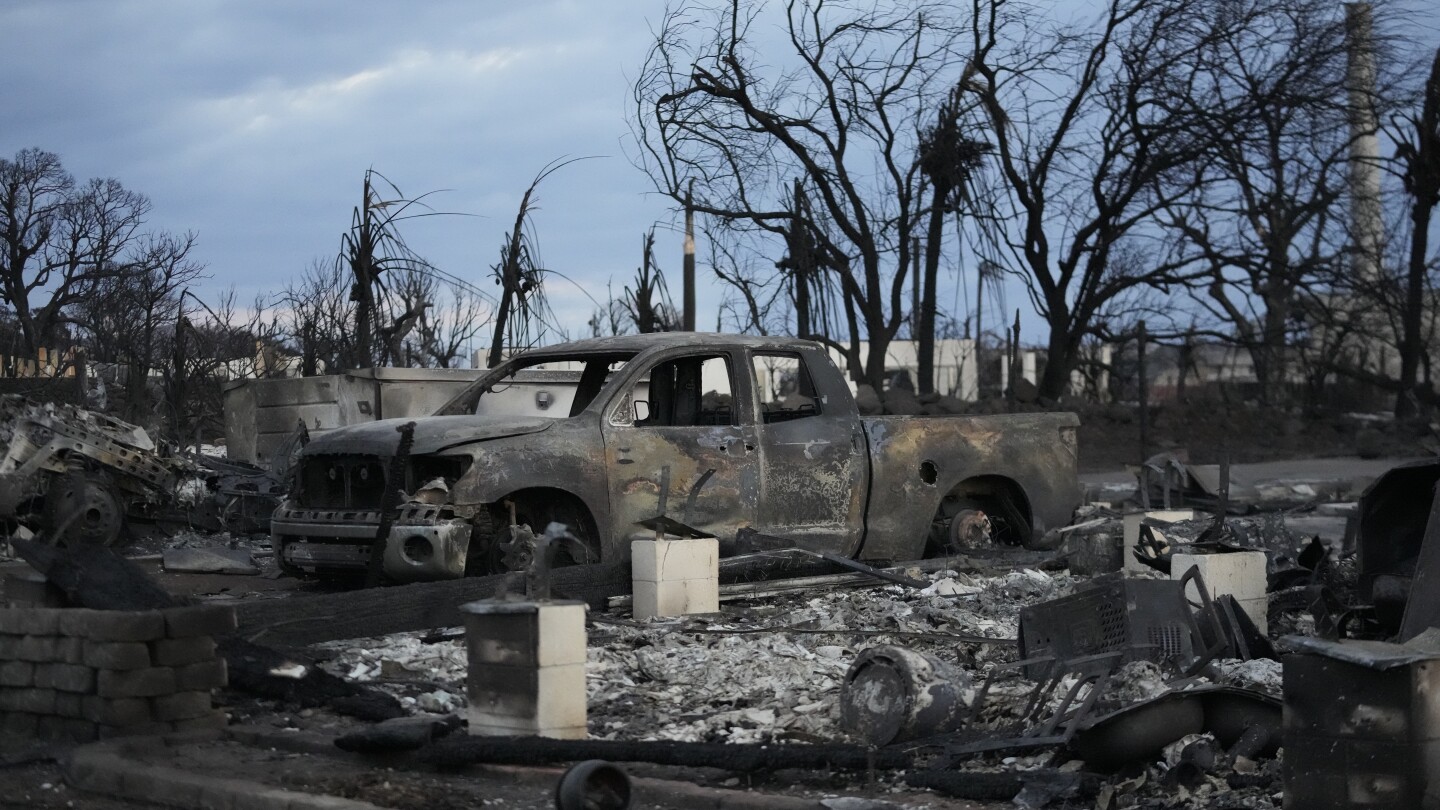Trees and poles standing amid Maui fire wreckage aren’t unusual, contrary to conspiracy theories

CLAIM: Scenes from the Maui wildfires show cars and buildings badly damaged near trees and poles that remain standing, suggesting a wildfire wasn’t the cause.
AP’S ASSESSMENT: False. Such observations from the fires on the Hawaiian island are not unusual, experts say. Wildfires often spew fiery embers that hit larger targets like homes and cars. Trees that catch fire are typically not completely vaporized, in part because of their water content.
THE FACTS: Amid the devastating wildfires in Maui, some social media users are advancing claims that visuals of the aftermath suggest a fire isn’t actually to blame.
“The powers to be are at work again. This was no wildfire,” a voiceover on one Facebook video states, showing photos of Maui wreckage. “A wildfire that demolishes buildings, leaving trees standing, leaving restaurant umbrellas and trees untouched – yet having the power to destroy a boat in the middle of the ocean … What we are seeing here is definitely no wildfire. Wildfires do not completely burn out vehicles, glass and all, yet leaving nearby trees and utility poles still standing upright.”
But experts say it is not unusual to see such damage after a wildfire.
“It’s actually very common that wildfires will burn out structures and vehicles but leave surrounding trees, utility poles, and other vegetation unscathed,” said Michael Gollner, an associate professor of mechanical engineering at the University of California, Berkeley, who leads a fire research lab.
Wildfires are often spread to homes and other structures via embers — small, burning particles that break from vegetation or structures, Gollner told The Associated Press in an email.
He pointed to a 2008 federal report about a fire in Lake Arrowhead, California, that found that a wildfire initially showered a neighborhood with fiery debris, igniting several homes and vegetation. But it was the subsequent spread between houses that accounted for most of the residential damage, the report said, not the wildfire itself engulfing homes. Photos in the report show homes destroyed amid trees that remain standing.
Christopher Dunn, an Oregon State University assistant professor of wildfire risk science, offered a similar assessment of the Maui visuals showing trees and poles still standing amid fire-ravaged landscape: “No, that’s not unusual.”
Dunn provided photos from a 2020 fire in southern Oregon in which homes were destroyed while neighboring trees remained upright, despite some charring. While small pieces of wood burn easily, the sheer size of large trees, some protection from their bark and the water they contain make it so they don’t simply vaporize during a fire, he said — which explains the fact that some salvage trees for lumber after a forest fire.
Likewise, Arnaud Trouvé, a professor of fire protection engineering at the University of Maryland, said fires can spread through flame contact, radiation or the flying embers, also known as “firebrands.”
“A fire that spreads through flame contact and/or radiation will typically attack all fuel sources on its path. Under those conditions, you would not expect to find unburnt trees,” he said in an email. “But fire spread in the wildland urban interface (WUI) has been shown to be often controlled by firebrands. Under those conditions, you can find patches of unburnt vegetation and structures. This has been observed in previous WUI fires on the West Coast of the US.”
He added that structures, decks and fences are susceptible to accumulating flying embers, making them particularly vulnerable — whereas the wind may blow such embers past trees and poles.
The Maui wildfires are the deadliest in the U.S. in more than a century, responsible for a death toll of at least 96. Officials have not yet determined the cause of the fires, which were fueled by dry weather and the winds of a nearby hurricane.
___
This is part of AP’s effort to address widely shared misinformation, including work with outside companies and organizations to add factual context to misleading content that is circulating online. Learn more about fact-checking at AP.
This article has been archived for your research. The original version from Associated Press can be found here.


